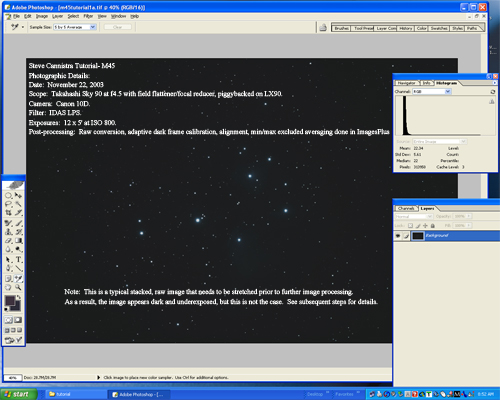Background:
Please note- I wrote this simple tutorial several years ago, when I was
interested in DSLR astrophotography with the Canon 10D. Although
I exclusively do CCD astrophotography now, many of the principles
involved in image processing have remained the same, so I've decided to
keep this tutorial on my website in case anyone might benefit.

Notice that the image is dark, which
is
typical for raw converted Canon files (since they are derived from a
linear
relationship between channel number and channel intensity). In
order
to transform the image into something that we are familiar with, the
curves
function must be made non-linear (i.e., stretched, shown in step 2) as
a
first step in processing. With a keen eye, however, you will
notice
that this photo will turn out very well- the stars are pinpoint, and
there is a fair amount of nebulosity already visible (click on this and
all other images for a higher resolution view).

